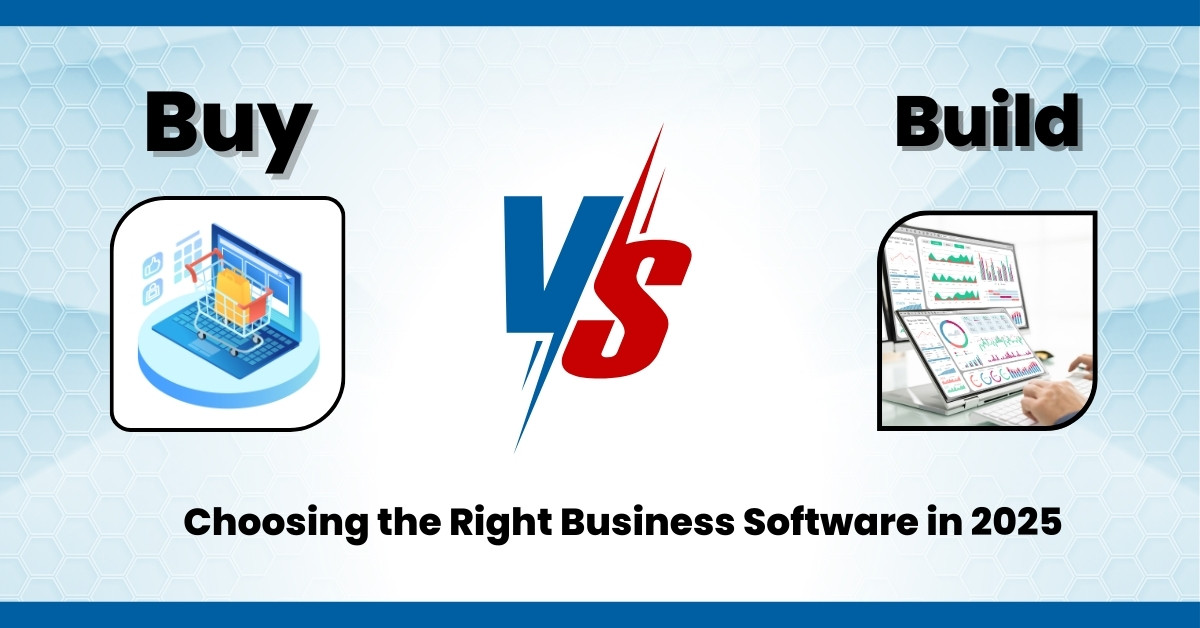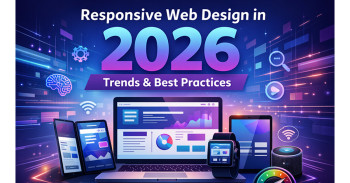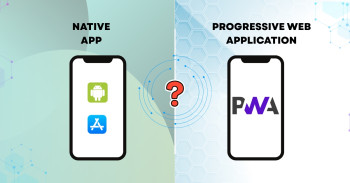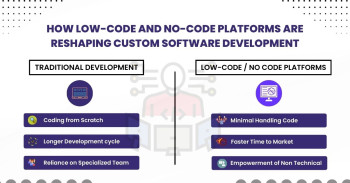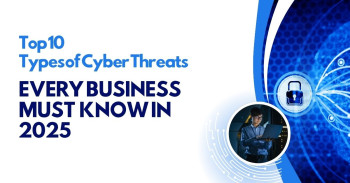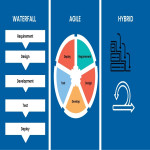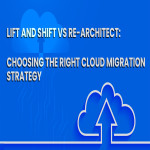Build vs. Buy: How to Decide What’s Right for Your Business Software Needs in 2025
In 2025, businesses face a critical decision in their digital transformation journey: Should they build custom business software or buy ready-made business software solutions? This choice impacts costs, scalability, security and competitive positioning. Making the right decision can determine whether your company stays ahead or falls behind.
This blog will guide you through the build vs. buy software debate, key factors to consider and how to align your choice with long-term goals for business software success.
Why Businesses Choose to Build Custom Business Software
Developing software in-house provides total control and customization. It’s especially valuable for companies with unique workflows, industry-specific needs, or a desire to innovate beyond standard tools.
Advantages of Building:
- Tailored Features – Designed to match your exact processes.
- Competitive Edge – Unique solutions can differentiate your brand.
- Scalable Architecture – Built for growth and seamless integrations.
- Enhanced Security – Data control is critical for industries like healthcare, finance, or government.
Drawbacks of Building:
- High initial investment and ongoing maintenance costs.
- Requires skilled developers or outsourcing.
- Longer development time, delaying ROI.
For businesses prioritizing innovation, custom business software development offers unmatched flexibility.
Why Businesses Opt to Buy Off-the-Shelf Business Software Solutions
Purchasing software is often the quickest and most cost-effective way to meet business needs—especially for functions that don’t require heavy customization.
Advantages of Buying:
- Fast Deployment – Solutions can be up and running in weeks.
- Lower Upfront Cost – Subscription models spread expenses.
- Continuous Updates – Vendors manage patches, upgrades and support.
- Industry Best Practices – Pre-built workflows based on common use cases.
Drawbacks of Buying:
- Limited customization options.
- Potential vendor lock-in and long-term dependency.
- Integration issues with legacy or custom systems.
For many organizations, adopting ERP business software or similar platforms helps achieve quick wins with proven reliability.
Build vs. Buy: Essential Considerations for 2025
When assessing the choice between developing or purchasing business software solutions, consider:
- Strategic Alignment – Will the solution offer a distinct competitive edge?
- Total Cost of Ownership (TCO) – Weigh initial expenses, subscription costs and ongoing maintenance.
- Time-to-Value – How soon do you need to achieve results?
- Scalability – Is the solution capable of evolving as your business expands?
- Integration Features – Will it integrate seamlessly with your current technology stack?
- Compliance and Security – Does it adhere to the regulatory requirements of your industry?
The Rise of Hybrid Approaches
In 2025, many businesses blend both models:
- Buy a core platform (CRM, ERP business software, HRMS).
- Build custom business software add-ons for unique workflows.
- Leverage low-code/no-code tools to accelerate development.
This hybrid approach combines speed and cost-efficiency with customization and flexibility.
Best Practices for Choosing the Right Path
- Conduct a Needs Assessment – Align software with business objectives.
- Engage Stakeholders Early – Gather input from IT, operations, finance and end-users.
- Do a Cost-Benefit Analysis – Compare 3–5 year ROI for both options.
- Run Pilot Tests – Experiment with trial software or small-scale builds.
- Plan Change Management – Ensure smooth adoption across teams.
Conclusion
The build vs. buy software decision in 2025 is not one-size-fits-all. Building may be right if custom business software development is central to your competitive strategy. Buying is ideal for speed, affordability and standard workflows with business software solutions. A hybrid model often delivers the best balance.
The key is to evaluate your long-term vision, resources and market demands. With the right strategy, your business software investment can drive innovation, efficiency and sustainable growth.
